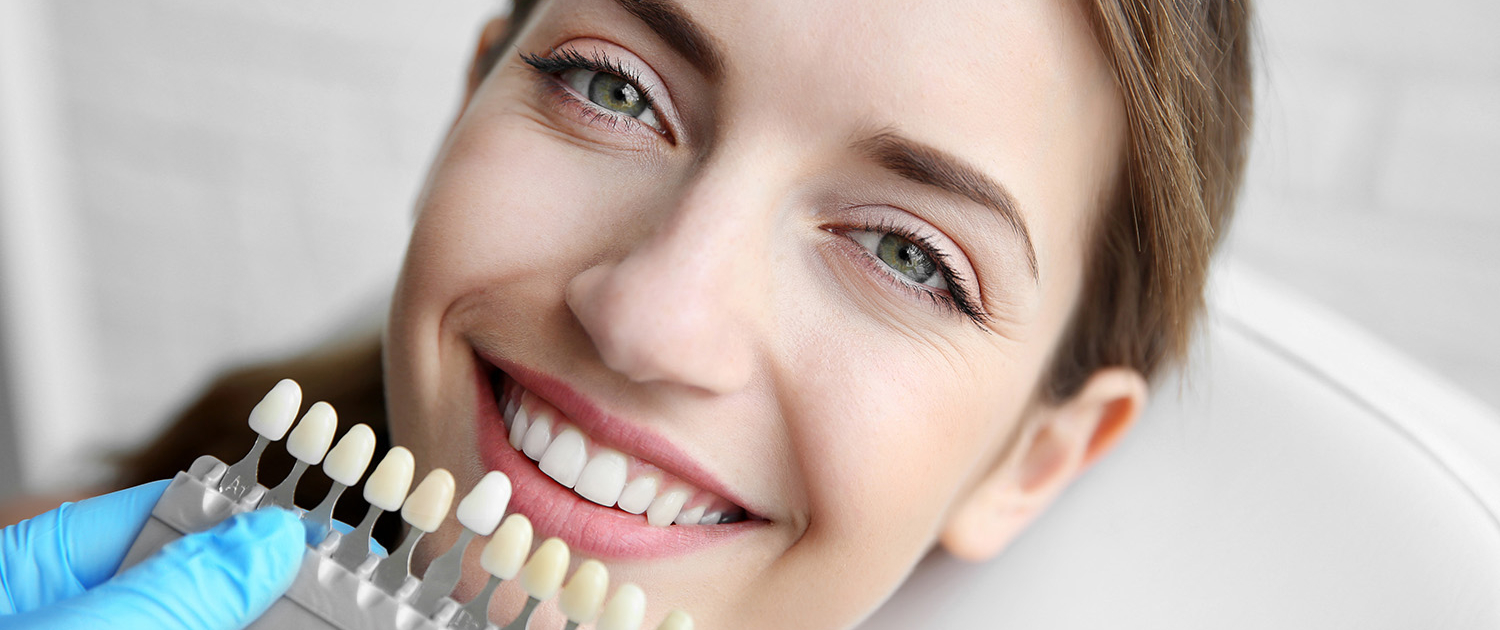Teeth whitening for a glowing smile
A white and bright smile exudes unquestionably health and beauty while it also has a completely positive effect on both our psychology and the psychology of those who see us. Dental Bleaching is one of Periodental Care services.
Teeth whitening is a chemical process that leads to the change of the colour of natural teeth (we can NOT change the colour, through whitening, of prosthetic works, i.e., cases / crowns, or of fillings) after application of a whitening gel containing peroxide of hydrogen or carbamide peroxide. It is a 100% safe procedurefor teeth and systemic health, the gel used is biocompatible with both the tissues of the mouth and the body.
How is bleaching done? The available techniques
The available whitening techniques are three: whitening at home with special trays, whitening in the dental practice (in office bleaching)with laser or with special whitening lamps or with photopolymerization lamps and the combination of the two above methods. Before applying any whitening technique, a thorough cleaning of the teeth is recommended in order to remove microbial plaque and surface stains such as those due to the pigments of cigarettes or red wine. The dentist then records the original colour of the teeth by taking digital photographs.
Whitening at home is done with personalized trays in which the patient places the whitening gel. For the construction of the trays, the dentist takes the impression of the upper and lower jaw and when they are ready, he / she delivers them to the patient together with the whitening gel. The gel is placed inside the trays and they in turn are applied during the day or night for a set of hours and days that varies depending on the material chosen. When the procedure is completed, it is recommended to wait for about 3-5 days forthe colour to stabilize and then a control is performed by the dentist.
The in office dental bleaching is done with laser or special bleaching lamps or with photopolymerization lamps. Initially, both the patient and the dentist wear special protective glasses. Then, a special protective dam that covers the lips and protects the cheeks is placed in the inside of the cheeks. Then a special material is placed on the gums which isolates them so that they do not encounter the whitening material. Then the whitening gel is spread on the teeth and activated with the special device available in the dental practice (laser or special whitening lamp or photopolymerization lamp). Bleaching can be completed in 1 or 2 sessions; each session lasts about 1-2 hours. The result is immediately visible. However, even in this case it is good to wait 3-4 days for the final colour to stabilize.
The third technique is a combination of the previous two. That is, the patient performs a whitening session at the dental practice and then continues for a few days at home using personalized trays.
Advantages and disadvantages of the various bleaching techniques
In home bleaching
Advantages:
- The aesthetic result / colour change is achieved gradually and is long lasting.
- The cases of tooth sensitivity are rarer than when performing whitening in the dental practice using lasers or other special lamps.
- The costi is lower than when performing whitening in the dental practice using lasers or other special lamps
- The patient can keep the personalized trays and repeat the whitening procedure after some time (as long asthe trays continue to fit properly in the mouth) paying only for the whitening gel.
Disadvantages:
- The duration of the treatment is about 2 weeks.
- During the bleaching procedure it is recommended to limit smoking and caffeine intake as well as the consumption of certain foods and beverages that colour the teeth and the tissues (e.g., beets, strawberries, cherries, red wine).
In office bleaching with laser or special lamps
Advantages:
- The aesthetic result is immediately visible after the end of the session.
- The process is faster than bleaching at home, just 1-2 hours.
- The patient does not need to change his/ her habits by limiting special categories of food or drinks.
Disadvantages:
- The cost is higher than home bleaching.
- The incidence of tooth sensitivity is higher than when performing bleaching at home.
Combination
Advantages:
- The advantages of the 2 previous techniques are combined.
Disadvantages:
- The cost of this technique is higher than the previous 2.
How long do the bleaching effects last?
Teeth whitening is not a permanent treatment, over time the teeth tend to return to their original colour. How quickly this happens depends to a large extent on the habits, diet, and oral hygiene of everyone as well as on whether we smoke or not. On average, the bleaching effect lasts for about 2 to 3 years. Satisfactory maintenance of the result is usually achieved with a series of 3 daily applications once a year.
Can everyone do bleaching?
The whitening procedure should be avoided in people suffering from gingivitis (in this case whitening can be performed after successful treatment of gingivitis), periodontitis or extensive gingival recessions (increased risk of tenderness). It is also not recommended for people suffering from dental tissue pathologies such as incomplete enamel formation as well as for pregnant and lactating women.
In people with prosthetic works (e.g.,crowns, bridges, veneers, etc.) or fillings bleaching can be performed, but as the gel does NOT act on the prosthetic or occluding materials, after the end of the treatment the abovementioned works should be replaced by new ones so that the aesthetic result is harmonious.
The safest way to find out if you can whiten your teeth is to consult your dentist who after a thorough visit will know how to advise you better. It is very important to remember that dental bleaching should only be performed by professional dentists using certified biocompatible materials.

